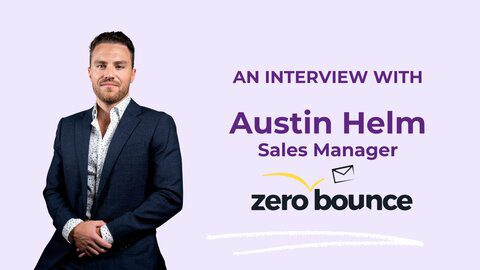ZeroBounce Sales Manager Austin Helm says the best way to win at email marketing this holiday season – and beyond – is to focus on the basics.
From avoiding the dreaded spam folder to standing out with human-centered communication, Austin Helm shares strategies every marketer needs to know. These strategies are easy to implement, so you can get results just in time for the holidays.
Are you ready to make your email marketing even better?
In this fast-paced interview, email marketing expert Austin Helm shares his wisdom on:
- how brands can cut through the noise
- focus on fundamentals
- and achieve greater campaign success.
Austin’s advice is practical and impactful.
It is the holiday season and brands right now are already roaring. What do you think is the most important thing for them to keep in mind as we go into the 2024 holidays?
One thing companies want to be conscious of is figuring out how to drown out all the noise and focus on the fundamentals.
With the holidays coming up, there’s so much going on, and you hear about all these different things. But what’s really going to help your company succeed and grow your sales is focusing on the basics.
Make sure your data is good, your domains have good reputations, and everything is clean. It’s all about staying organized and ensuring everything is in order so you can have the most success.
Honestly, the preparation for this time of year starts back in the summer. Right now, it’s about fielding the incoming activity and reaping the results of what you’ve done to prepare.
Staying organized and executing your plan are key.
“Take it to the next level by getting good at segmentation”
Let’s say somebody is getting ready in December to really ramp it up. What do you think are some things they can do to get even better results this year?
If you’re familiar with the email marketing space, people usually start by sending emails to a general list. They might have some success and think, “Okay, this worked. I’ll do it again next year.”
But to take it to the next level, you need to get good at segmentation. This requires observing everything going on and figuring out how to group your audience.
For example, has this customer engaged with us before? Have they purchased before? Have they opened emails before? Those are three different segments that might need different communication styles—different verbiage and email volume.
Understanding these segments and customizing your messaging for each can really improve results. Keep those who haven’t engaged separate from those who have, and tailor your communication to each group.
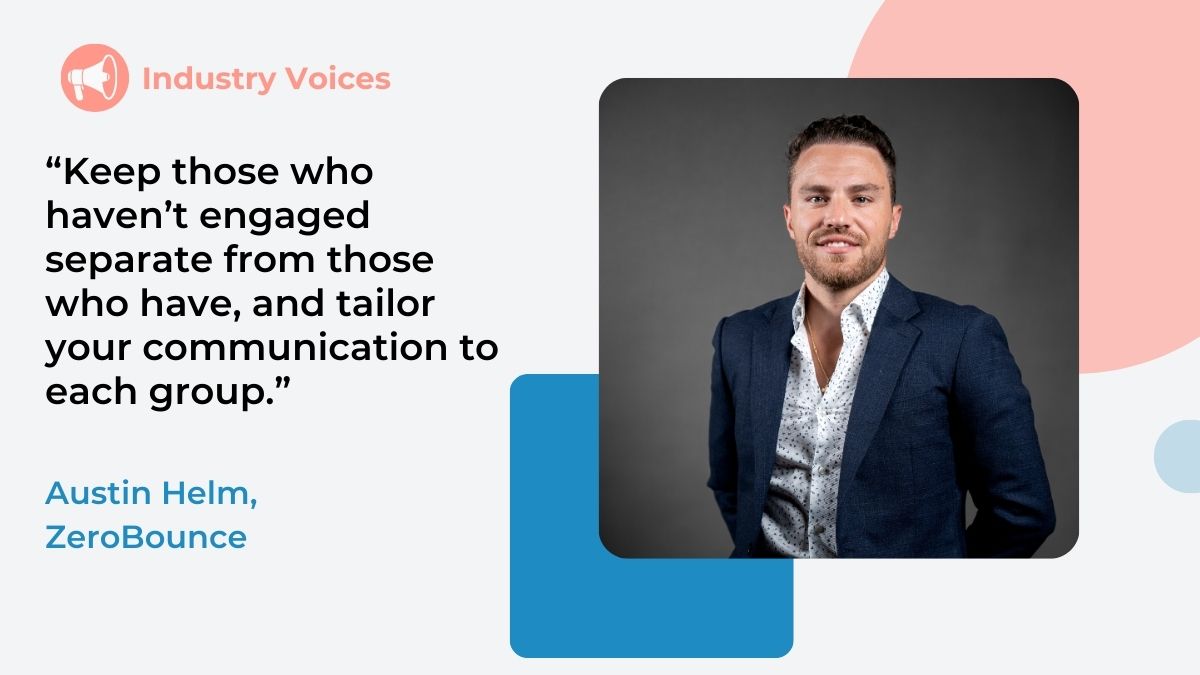
“Your goal is to prevent bounces in the first place.”
What should someone do if they’ve added a lot of new email addresses to their list recently? Can they just add them, or is there a process?
The first thing is to consider the source of the data. Did these sign-ups come from your website, a conference where someone personally gave it to you, or did you purchase a list? The source will determine how you treat it.
Organic sign-ups are obviously higher quality than purchased lists, but either way, you need to clean the data to ensure it’s valid. Clean the data, segment the good from the bad, and tailor your messaging accordingly. This step is critical to enhance the results you’re going to get.
I once spoke to a guy who said most of his emails got through. Do you really need to worry about a few bounces?
Yes, you do. A common mistake people make is sending to a list, seeing a few bounces, and then just removing those bounced emails. But the damage has already been done.
Your goal is to prevent bounces in the first place. Ideally, you want a deliverability rate of 99%. Cleaning the list beforehand ensures your emails get delivered and protects your domain’s reputation. If you just remove bounced emails afterward, the harm to your domain’s reputation is already there, and that will affect future campaigns.
Address the problem beforehand so that those bounces and anything going to spam does not happen at all when you’re sending emails. Better to attack the problem at the beginning than deal with the bigger problems later on.
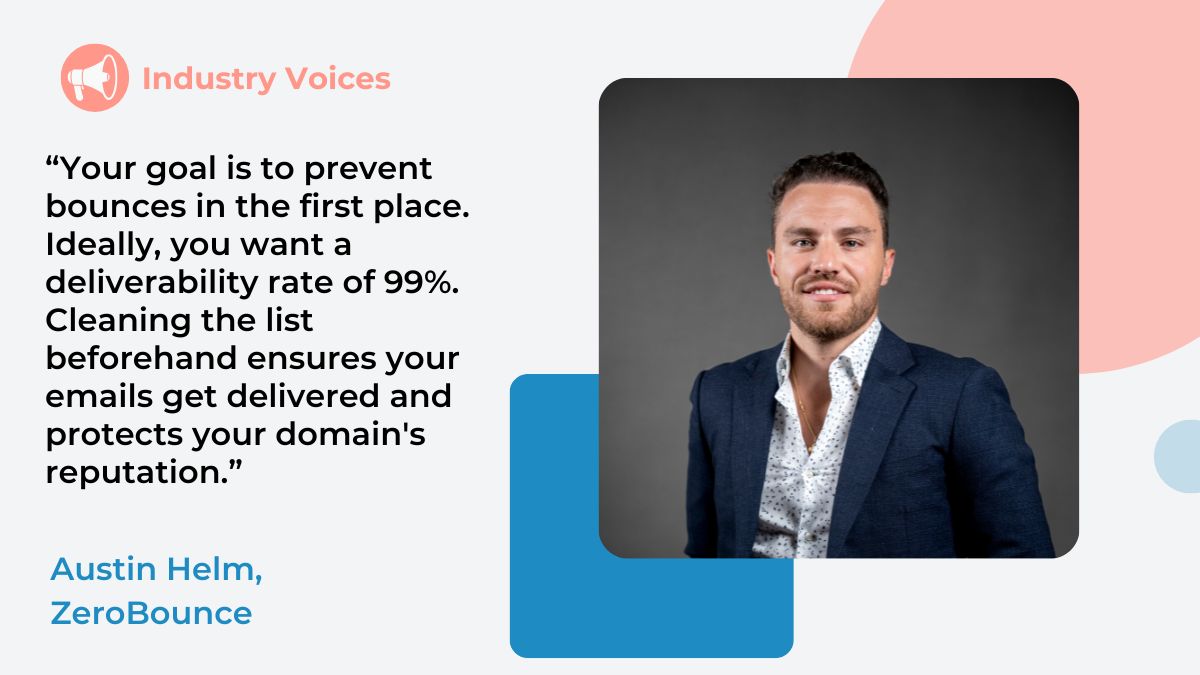
Consumer vs. business emails: how often to clean your list
How often should someone clean their list?
It depends on the makeup of your list and the type of emails you have. Consumer emails, like Gmail or Yahoo accounts, have a longer lifespan than business emails, which can change frequently when people switch jobs.
For consumer lists, cleaning two to three times a year is usually fine. For business-to-business (B2B) emails, you should clean three to four times a year. Once a quarter is a good rule of thumb.
Validate email sign-ups in real time
When it comes to sign-up forms, is there a way to keep bad emails out from the start?
Absolutely. It’s one of the things that’s become pretty popular, especially now that people are starting to understand the importance of clean data and high levels of deliverability.
People love putting real-time validation engines on their sign-up forms, where they can block the bad emails and validate the good emails at the gate. That way, they don’t have to deal with the problem later on. So as someone’s entering one of their emails in the form, it’s being validated.
And then you get the result. It’s either a bad email or a good email address. You get to decide what to do with it, whether or not you want to let those people pass through into the website, or block them and tell them, you’ll have to give us something legitimate. Otherwise, you’re not going to be able to get through.
If the email is valid, you let it through, and with good data, you can start sending marketing information immediately. This is crucial because many businesses overlook the damage caused by sending welcome series emails without validation.
When there’s no email validation, those emails go out automatically—whether the data is good or bad. If the email address is invalid, those welcome emails will likely bounce right away, which can harm your sending domain’s reputation.
On the other hand, real-time validation ensures you’re only dealing with valid emails. This means your welcome series emails will not only reach the recipient but also set the stage for smooth communication going forward. Real-time validation on forms has become increasingly popular for this reason.
“Avoid panic mode by focusing on data quality”
What’s the number one issue customers come to you with?
I always get one of two types of clients. It’s either someone calling in saying, “Hey, I’m doing maintenance on my database. I just need to get some lists cleaned, some data checked, and I’ll be on my way.”
Or I get people calling me freaking out, saying, “Hey, everything’s going to spam! My domain is trashed. I don’t know what’s going on—what do I do?”
Then, you have to ask them a bunch of questions to diagnose what’s happening. The most common issue, I’d say, is people going to spam and not getting their emails into the inboxes they’re targeting.
Unfortunately, it’s a problem that can only be solved with either time or money, so you really have to decide how you want to approach it. But getting out of spam is not a fun process. That’s the struggle most people face, and ironically, it’s such a simple thing to avoid.
We have all these tools and processes at ZeroBounce to help with email deliverability. But honestly, none of them would be needed if you just focused on the quality of your data. If your data is good, your emails will deliver. You won’t have issues. You won’t damage your domain or create problems with your email service provider—none of that.
If there’s one thing to focus on, it’s this: make sure you validate emails and ensure your data quality is good. If you do that, you won’t go to spam, you won’t have domain issues, and instead you’ll get the deliverability levels you’re looking for.
You’ll see much better results if you just focus on that one fundamental thing.
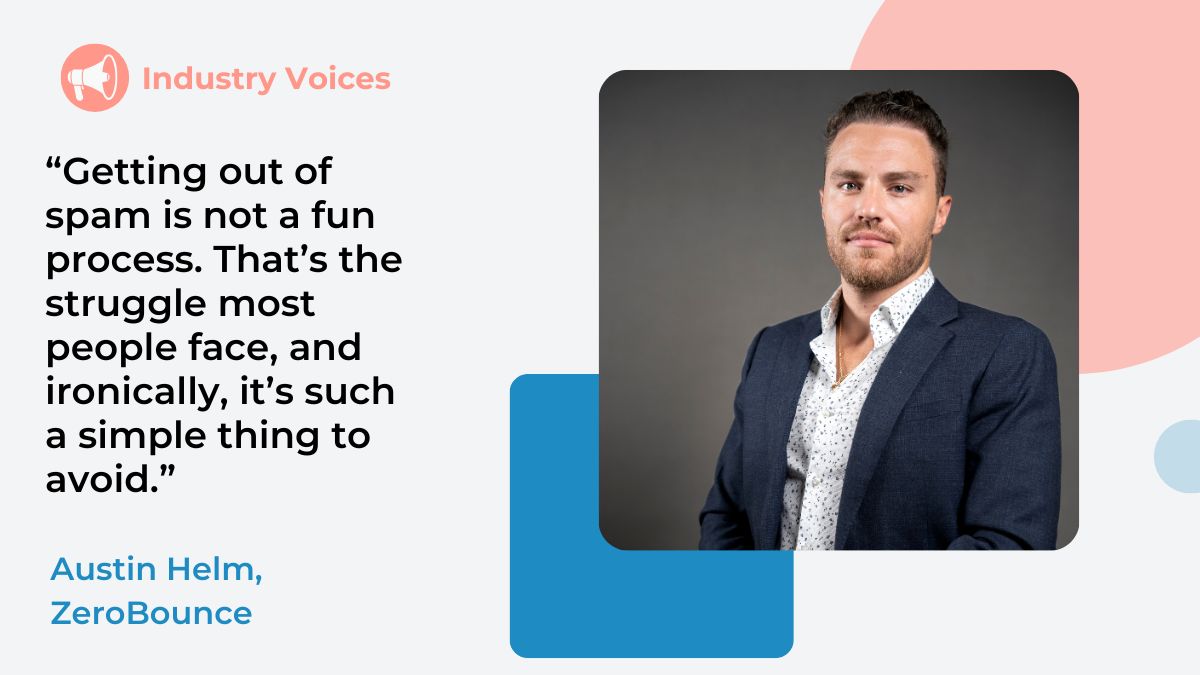
Aside from cleaning the list, what else do people overlook?
One thing people often overlook is considering what their domain strategy should be. In my six or seven years in this industry, I’ve found that developing a strong domain strategy is one of the most important factors. It’s about figuring out, “OK, we’re going to send these types of emails from this domain.”
For example, if it’s cold outreach, you might use a specific domain dedicated to sending cold emails. On the other hand, if you’re communicating with clients you’ve already talked to, those emails should come from your main domain. It’s safer, and there’s less risk of damage because you know these are people you’ve established contact with.
Defining which domains you use for different types of communications is crucial in the email marketing world.
If you plan to use a new domain as part of your strategy, it’s essential to warm it up first. You can’t just start sending emails from a new domain without properly warming it up or building familiarity with major email service providers. Warming up the domain ensures there’s been some prior interaction and helps establish trust before using it to send emails.
Ultimately, figuring out your domain strategy and validating your data are two key steps that can significantly improve your results.
Go human: stand out with personal emails
Sometimes I get a marketing email that really stands out. Do you have any tips for making emails better, beyond validation?
I always say I’m a big fan of going against the grain.
The world is clearly heading in a direction filled with new AI technologies, automation, and similar advancements. But for me—both as a consumer and a businessperson, especially in sales and outreach—I’m not a fan of that trend.
I believe that if you want to stand out now, you should go the opposite direction and make your communication as human as possible.
Plain text emails have been incredibly effective for me. Just being myself, putting my own personality into the emails I send, and focusing on basic, authentic communication has brought great results. When I receive emails, the ones that grab my attention are simple, straightforward messages from people just being human.
Visually, plain text emails stand out because everything else—the polished, automated, flashy emails—all starts to look and feel the same. But when you receive something that feels like it’s coming from a regular person having a genuine conversation, it immediately catches your eye. You’re much more likely to read it, engage with it, and respond because it feels authentic.
Nobody wants to get emails from robots. People want to connect with other people, and that’s what makes the difference.
Everything seems to be moving toward AI and automation. I think that’s exactly why a great strategy right now is to lean into the personal, human aspect of what you can offer.
While everyone else is adapting to the latest AI tools and automation trends, you have an advantage: being human. That human touch is becoming more valuable simply because so many others are heading in the opposite direction.
Sure, automation might allow for more efficiency in some areas, but in my opinion, it’s about quality over quantity. If your goal is to truly communicate with someone and build a relationship, there’s no better way than to just be a regular, genuine human being.
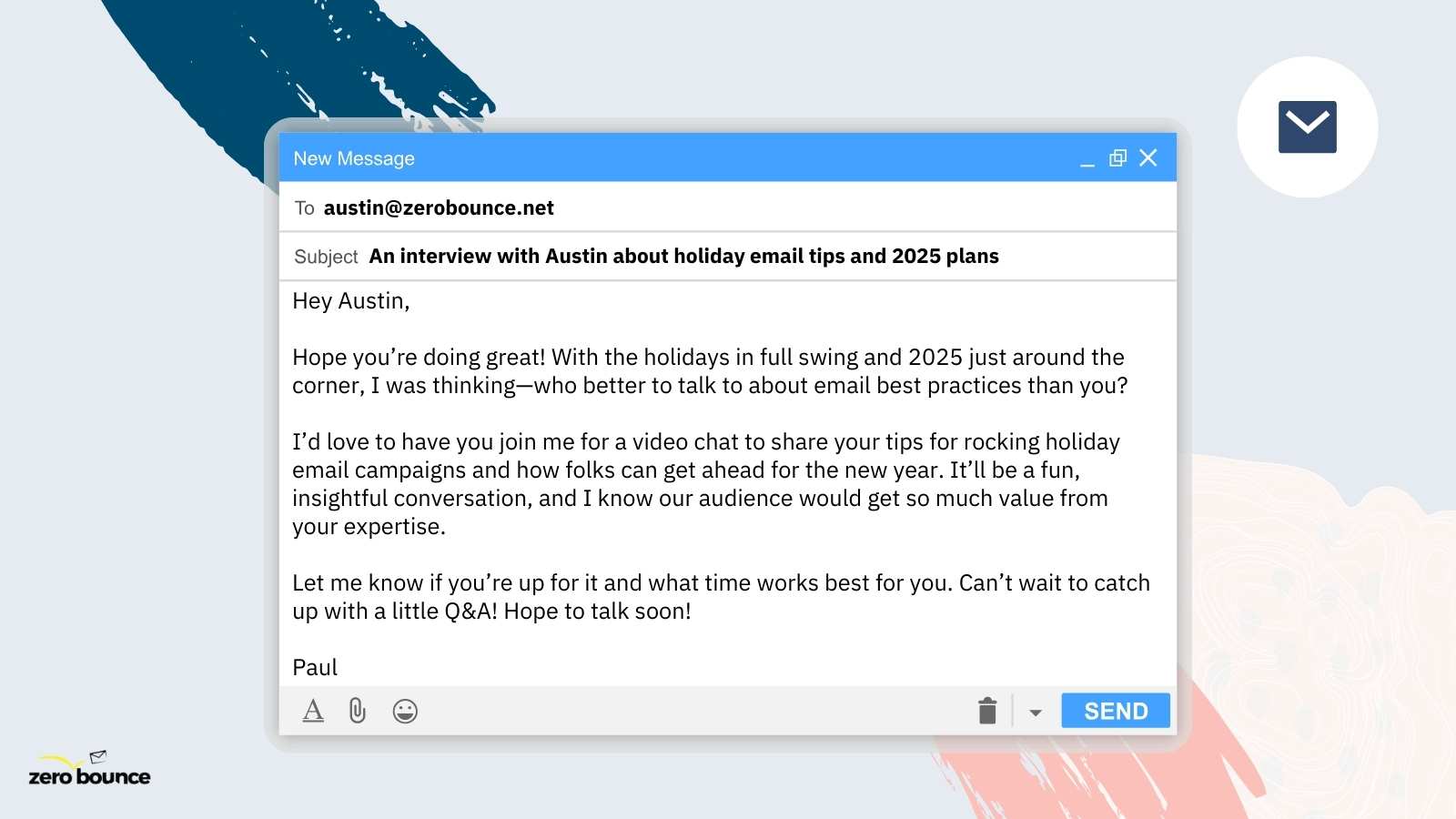
“Simplicity and consistency are key”
What can people do in the coming year to reach their email marketing goals?
The key advice I always give is to keep it simple.
Email marketing might seem straightforward from the outside, but behind the scenes, there’s a lot happening to make it work. It’s easy to get caught up in the technical details, but focusing on the fundamentals will make it much more manageable and ensure better results.
If I were starting fresh, here’s what I’d do:
- Secure solid domains. Get a good domain, and consider a few extras for different purposes. Many providers, like GoDaddy, offer packages with combinations like .com, .net, and .org. Use them strategically for different types of communications, like cold outreach or engaged clients. Warm up these domains to establish trust with email service providers.
- Find a reliable email service provider. Choose one that’s easy to use, fits your budget, and checks all the basic boxes.
- Start with clean data. Don’t send to lists you’re unsure about. Clean your data to ensure you’re only sending to valid addresses.
When you start with warmed-up domains tailored for your communication type, a trustworthy service provider, and clean data, you’ll set yourself up for success. Sending good emails that won’t bounce pushes you in the right direction.
By focusing on these fundamentals—clean data, good communication, and strong content—you’ll avoid the headaches of troubleshooting email headers, server issues, or IP reputation problems. Nobody wants to deal with that. Stick to the basics, and you’ll be fine.
Need to clean your email list?
More than 25% of your email database goes bad every single year. If it’s been more than three months since you’ve cleaned your data, sign up for a ZeroBounce account and validate 100 email addresses free, every month.
Table of Contents
- “Take it to the next level by getting good at segmentation”
- “Your goal is to prevent bounces in the first place.”
- Consumer vs. business emails: how often to clean your list
- Validate email sign-ups in real time
- “Avoid panic mode by focusing on data quality”
- Go human: stand out with personal emails
- “Simplicity and consistency are key”
- Need to clean your email list?
